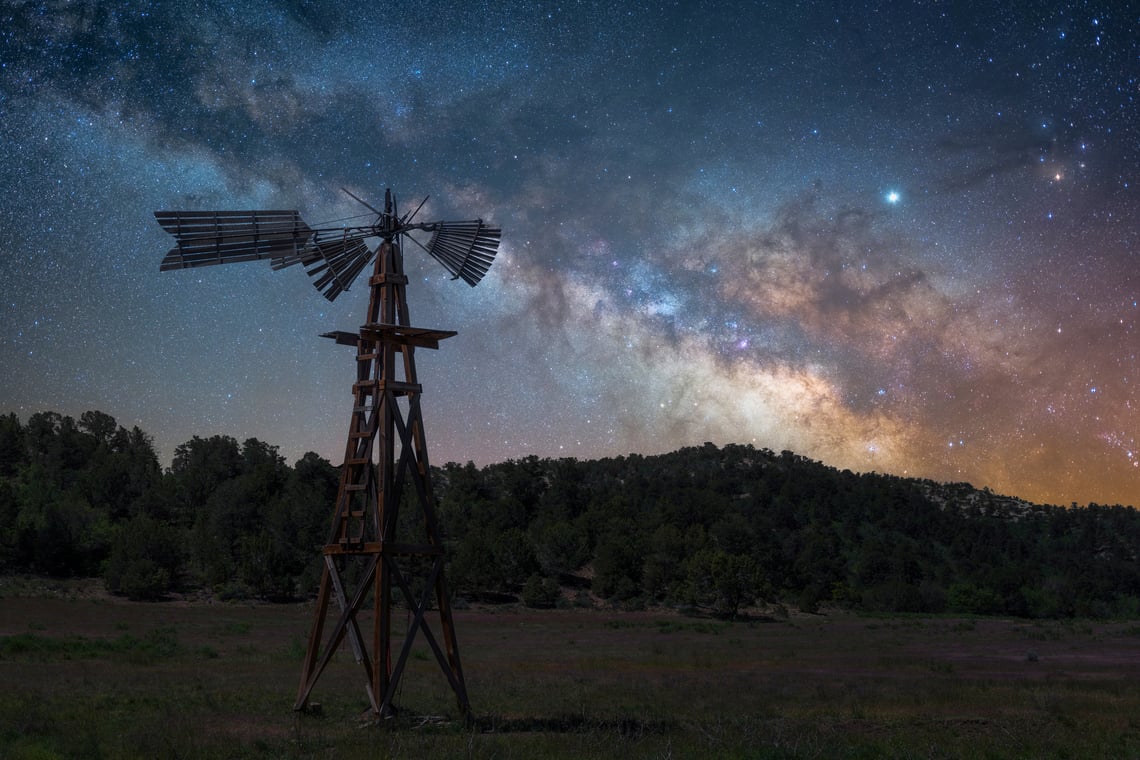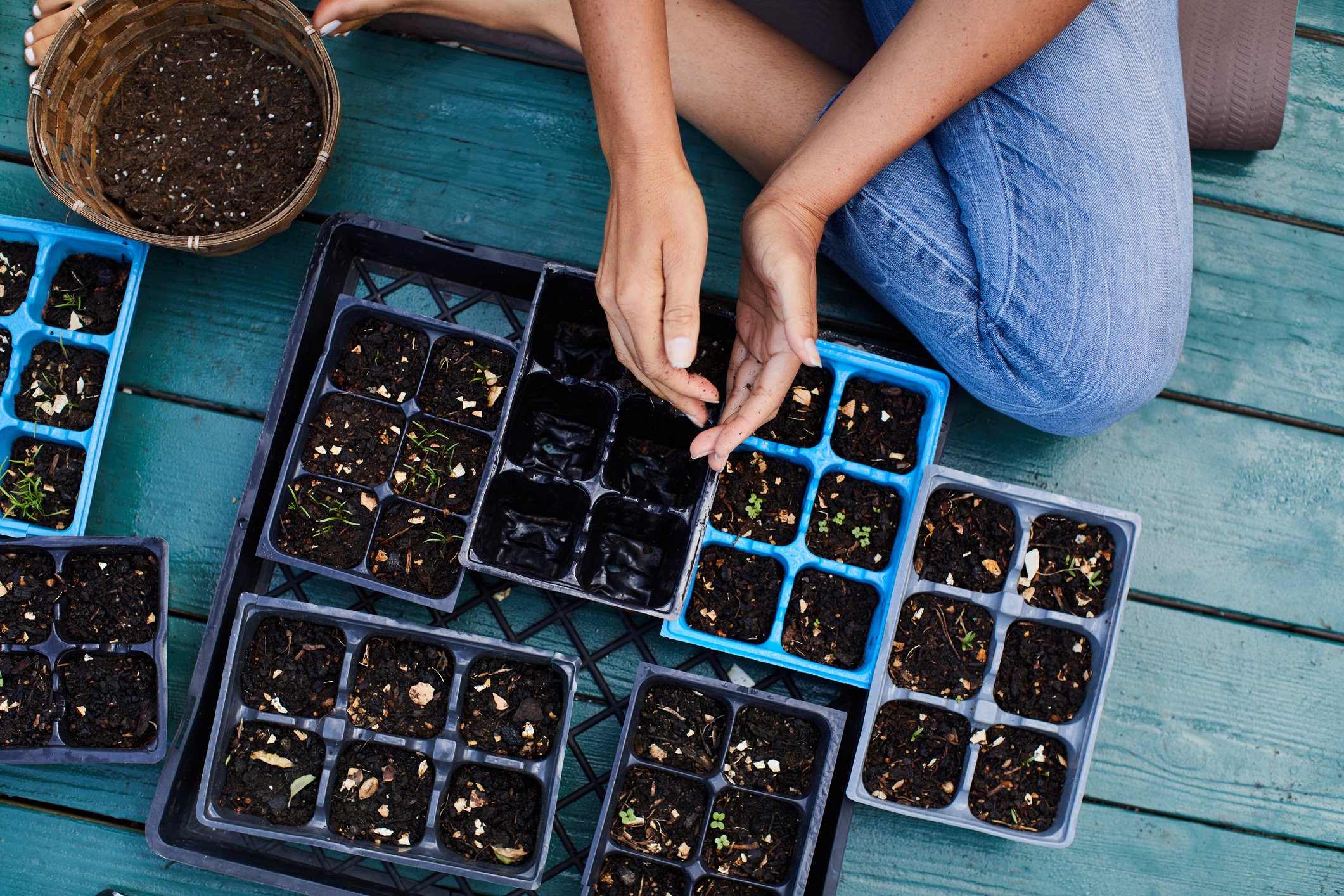Have you ever heard of the old Appalachian tradition of "planting by the signs"? This ancient method of garden planning relies on moon phases and the zodiac for everything---from starting seeds, to transplanting, weeding and more . We interviewed two experts on the subject to learn more about its cultural origins and how the cosmos can influence our gardens.
I wrote this article during a flowering week, a span of days between May 9 and 13, and under a waxing moon.
According to the moon phases and the zodiac, I could plant my flower starts and seeds before leaving for a month, while trusting that they would flourish (while also trusting my husband to water them). I discovered this on a Facebook page that I’ve recently started following, called Planting by the Signs.
Organized by Philip Case in 2009 (pictured right, being interviewed by Dr. Sarah Hall (right) for her forthcoming book. [Photo credit: Meg Wilson]), it shares, almost daily, what you should and shouldn’t be doing in your garden — or in other areas of your life. All according to the zodiac, and that great white orb in the sky that has enthralled creatures of the world for eons.
Omens, portents, signs — humans have always turned to the divine, or to nature and the cosmos, for guidance in what cannot be understood. There can be both truth and comfort in the mystery.
As the “About” page states: “Using moon phases and zodiac signs with good gardening methods helps your garden produce better. It's simple: just plant at the best time. I'll tell you when.” And Case does, reliably and, well, religiously.
Case is a retired editor of The State-Journal in Frankfort, Kentucky where he is also currently a gardening columnist. He is a University of Kentucky Extension Master Gardener, and a minister at the Warsaw Christian Church (Disciples of Christ) in Warsaw, Kentucky. He likes to grow herbs and tomatoes, which are his particular passion.
He first got interested in the practice when he moved from Lexington to Frankfort and observed that a member of his church had a better garden. “I asked him about the difference in his garden and mine: he said he planted by the phase of the moon and signs of the zodiac.”
I was intrigued by the duality of a man of faith who also followed zodiac and moon signs and asked how he might explain this gardening practice to a skeptic?
He answered, quite rightly, with a quote from Ecclesiastes 3: “To everything there is a season…a time to plant and a time to pluck up what is planted.” He added: “(Planting by the signs) has been followed for generations, and no doubt centuries, by indigenous people and others who passed their knowledge down from one generation to the next.”
Basic Practice
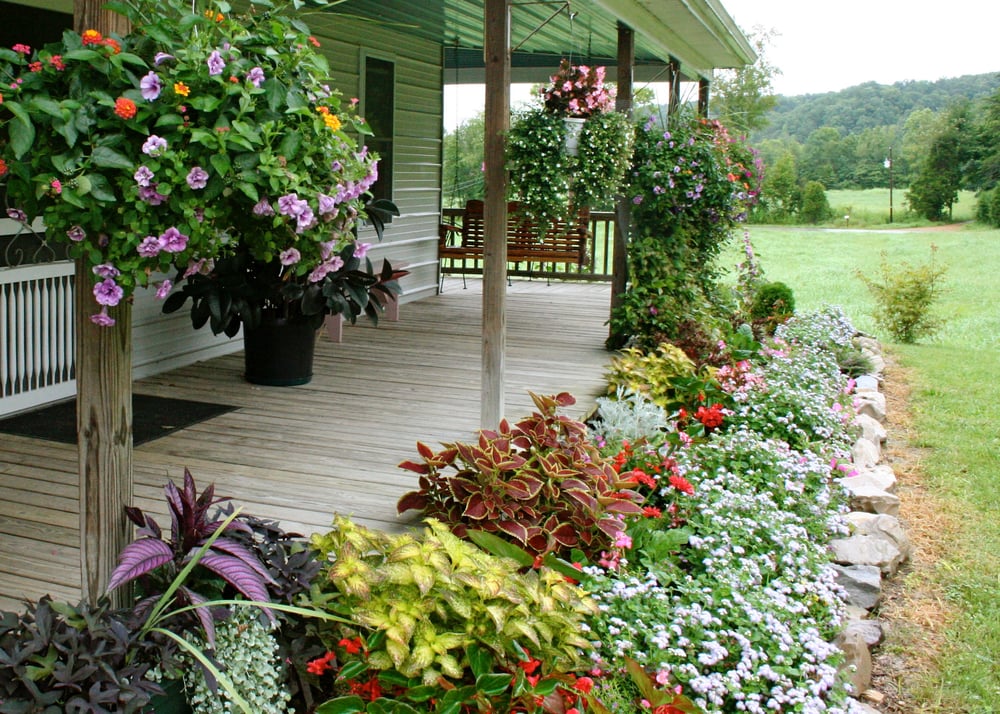
But what about the science? “As we became more ‘scientific,’ folks started to laugh at the idea. Those who try it and practice good gardening techniques, however, don’t laugh long.”
Case learned a lot from the Foxfire I book edited by Eliot Wiggington and from his friend, the late Buford Van Meter of Frankfort.
By consulting almanacs and following their advice on planting and killing times, when best to weed or plant root crops or above ground plants, he found that the practice worked for him, especially in increased yields. “People tell me once they try following the phases and signs, they aren’t going back to just ‘planting in the ground.” Case said.
He soon wanted to share his enthusiasm for the practice with others. So in 2009 when more older folks began to discover Facebook, he created the page with the help of a person he worked with. It now has over 11,000 followers from around the world, but mostly from the United States.
Case is frequently asked questions related to a specific issue of gardening, but this wisdom and practice also advises the best times to butcher or to pour gravel, cut wood or hair — so many things.
He’s also clear about one thing: “I don’t debate other systems of planting by the signs and I can’t take the blame if someone plants a tomato plant in the right phase and sign, say under a shade tree where a sun-loving plant never gets any direct rays, and doesn’t water or care for it and it doesn’t produce.”
“Planting by the signs is just one aspect of gardening,” he added. “When coupled with good gardening techniques, following the phases and signs can make your good garden even better.”
As a Christian minister, he is also very clear that he doesn’t view faith and religion as competing with zodiac signs and moon phases as garden practice, something echoed by others of the faith.
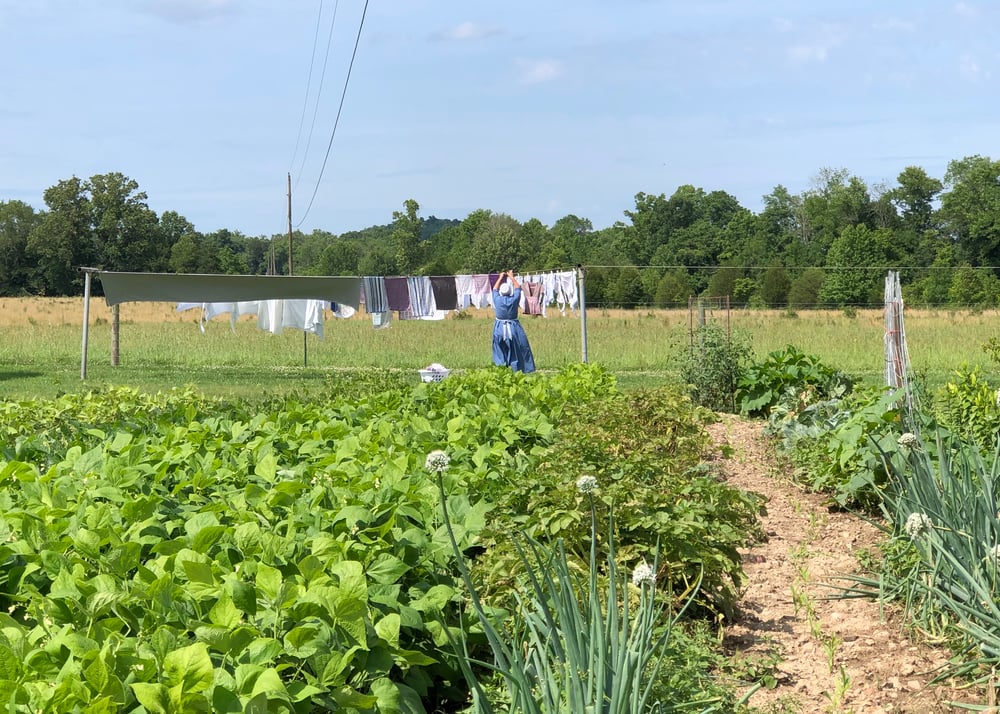
Here is a distillation of Case’s suggestions and practices for the home gardener, based on his extensive research and consultation:
- Phases of the moon and planting by the signs of the Zodiac are the core of the practice.
- If you can only do one, follow the moon phases. “If you are planting vegetables that produce beneath the ground, then plant when the moon is in the dark phase (waning). Conversely, if the plants produce above the ground, plant when the moon is in the light phase (waxing).”
- There are 14 days in each phase, so the changes break across the months. The moon calendar is a 28-day calendar.
- The 12 signs of the zodiac rule in a 28-day cycle each month – just like the moon. You’ll find this information on the “astrological chart” in most almanacs or online.
- The most fertile signs can be remembered by the acronym “Signs Plant Thick Crops” – or Scorpio, Pisces, Taurus and Cancer. Veggies planted in these signs and in the proper phase of the moon produce abundantly.
- The killing signs are Aries and Leo. No planting when they are in force.
- The flowering signs are Virgo and Libra. Plant flowers for blooms when they rule but don’t plant veggies under flowering signs as they tend to bloom and bloom and don’t produce as well.
“I was brought up in that day, and I can’t help from believin’ in it. When I plant my garden, I wanta’ plant it on the right time of the moon, but most of that’s forgotten now…there are too many things to think about today. A good home and plenty of land should make anyone perfectly happy.” — Mrs. E.N. Nicholson, interviewed for the original The Foxfire Book [1972], and, at the time, the oldest woman in her county (over 100 years old).
On Appalachian Tradition
Tipper Pressley is a long-time blogger on Appalachian culture, tradition and practices at The Blind Pig and the Acorn (pictured left, photo credit: Tipper Pressley). She writes from her soul and experience, all supported by family history and knowledge passed down.
One question that at first seems entirely juxtaposed is how can people of deep doctrinal faith also plant by the signs?
“As a believer in Christianity I feel like God made the earth to work in accordance to his will in an interconnected way,” Pressley said. “Just as the moon phases affect the tides I believe they affect all growing things. After practicing planting by the signs for many years, I believe they work.”
She added, “I always point out that, if nothing else, planting by the signs makes a huge difference in your garden organization and planning because it forces you to think ahead. An organized, well-planned garden always produces better.”
But are there any “new age” concerns of the practice, despite its history, particularly with devout Christians in Appalachia?
“I've heard quite a few people say planting by the signs is part of the occult. In all my research, and my personal interactions with people who follow the signs to plant, I've never heard anyone say they believe in the occult and the power it has over their garden. In fact, all my research has shown the direct opposite,” Pressley noted. “Like myself, folks who plant by the signs do it because of their strong faith in God creating the earth.”
“My grandmother Cora did everything by the signs. Plant, harvesting, canning and preserving of course but also hog killing, fishing and even hair cutting. She had one of those almanac calendars hanging on a nail in the kitchen. The first thing she did every morning was consult the calendar. That calendar ruled her day. She always had a fine garden and fat healthy pigs, chickens and milk cows.
“I remember stopping by her house on the way to go fishing. She said ‘You ain’t gonna catch nothing!’ ‘How do you know Grammaw?’ ‘The signs ain’t right!’ I laughed it off but she was right.” — Ed Ammons, from Tipper Pressley’s blog, The Blind Pig and the Acorn
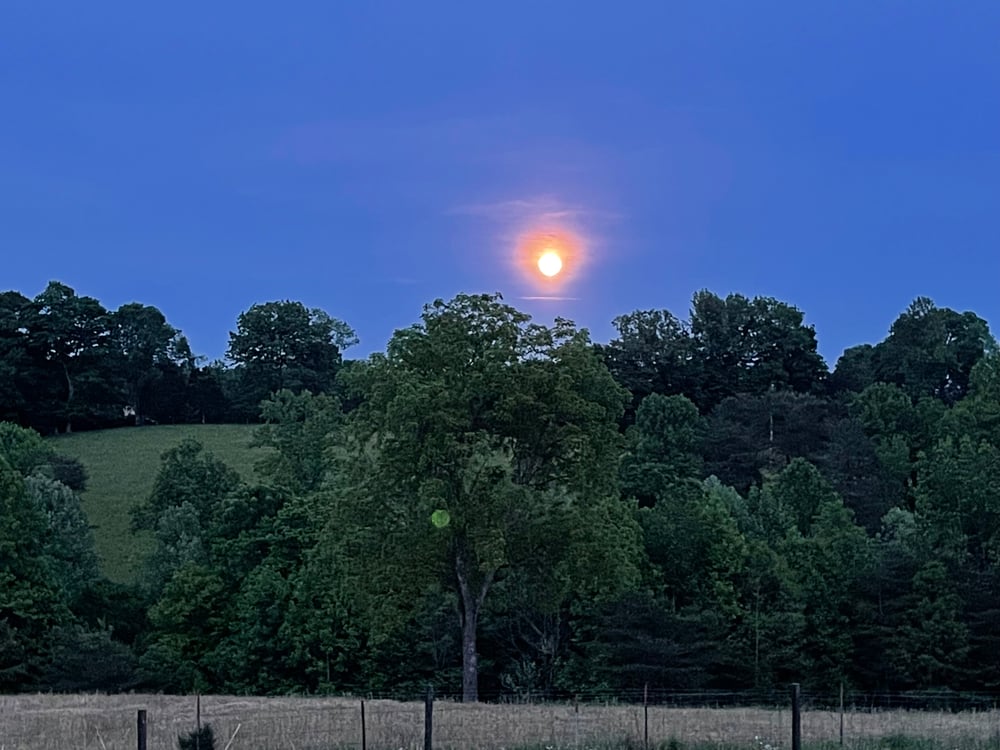
Cultural Origins
According to Rebecca Beyer, author of the blog Blood and Spicebush and the recent book, ‘Wild Witchcraft’— Folk Herbalism, Garden Magic, and Foraging for Spells, Rituals, and Remedies [Simon & Schuster: May, 2022], the tradition of planting by the signs is a fused evolution of people and cultures, beginning in the 1500s with the arrival of the Spanish and the healing traditions of their African slaves.
These would also come to align with Native American practices. Eventually, the Scotch-Irish and British colonists brought their own contributions to Appalachian culture: “...it was not until later that they arrived in Appalachia and began the process of cultural exchange with their own healing methods, as in the case with astrology, biblical prayer and spiritual-medical actions,” Beyer notes.
Dr. Sarah Hall, associate professor of Agriculture & Natural Resources at Berea College, is a Kentucky native who has written a book about this cultural and horticultural experience.
Her interest in planting by the signs began in 2010 when someone gave her some seeds and told her, “If you plant these under a certain sign, they will go an inch deeper than at any other time.”
That passing remark would lead her on an in-depth study on gardening under the moon and zodiac phases, complete with extensive oral histories and photographs with a variety of Kentucky people who are practitioners of these practices.
Although a scientist by profession, Hall added, “I’m not interested in doing a scientific experiment or to discredit something that is fascinating, and I appreciate the people I interviewed.”
Ultimately, the important takeaway is active gardening and planning: people who plant by the signs also study, prepare and are ready for any garden need through the growing season.
“It’s really about humans endeavoring to explain what is happening on the earth, and what is going to happen again. And I think anyone getting out to the garden is doing a good thing,” Hall said.
For More:
- Planting by the Signs, Facebook page
- Plantin’ by the Signs, a regular column by Philip W. Case in The State-Journal, Frankfort, KY
- Farmers’ Almanac, edited by Peter Geiger, Lewiston, Maine
- Chapters in Foxfire I and Foxfire 11: edited by Eliot Wigginton (1972); and Kaye Carver Collins and Lacy Hunter (New York: Anchor Books, 1999)
- The Old Farmer’s Almanac, Yankee Publishing, Inc., Dublin, New Hampshire
- The Blind Pig and the Acorn, blog on Appalachian culture and lore by Tipper Pressley [Links to her articles and experience with the practice]
- Sown in the Stars: Planting by the Signs, by Dr. Sarah Hall, will be available from the University of Kentucky Press in 2023. It includes oral histories with followers of the practice, a detailed history of different methods and sociologies as applied to horticulture, with photography by Meg Wilson.


